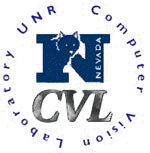

 |
|
|
|
Video-based target detection at signized intersections has many advantages over traditional inductive loops, such as easy set up, easy definition of detection zones, easy modification of detector settings, and lower maintenance cost. However, several common problems need to be resolved, including low lighting conditions due to adverse weather conditions. The main goal of this project is to design the video-based target detection algorithm by fusing visible with infared (IR) data to improve both accuracy and robustness, especially under adverse conditions (i.e., night-time, snow, rain, fog, etc.). We describe a traffic scene background model, a background subtraction process and on-line background update process that we have developed based on the support vector regression (SVR). Following an incremental support vector regression, the developed background model is on-line updated whenever a training input of intensity values is added to the training set. Such scheme enables the developed background model to be adaptive to the intensity variance of images caused by the changes of outdoor environment (i.e. illumination changes for visible image and variance of the thermodynamic and atmospheric conditions for infrared image.) This project is sponsored by Computer Vision Laboratory (CVL), Dept. of Computer Science at University of Nevada, Reno and Ford Company.
|
|||||||||||||||||||||||||||||||||||||||||||||||||||||||||||||||||||||||||||||||||||||||||||||||||||||||||||||||||
|
|